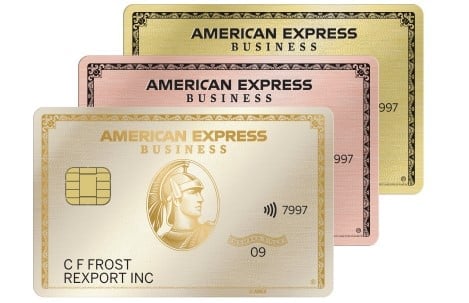Invoice Financing vs. Invoice Factoring: What’s the Difference?
Invoice financing allows you to borrow against your outstanding invoices. With factoring, you're selling your invoices to a factoring company at a discount.

Many, or all, of the products featured on this page are from our advertising partners who compensate us when you take certain actions on our website or click to take an action on their website. However, this does not influence our evaluations. Our opinions are our own. Here is a list of our partners and here's how we make money.
Small businesses that need to manage cash flow issues or cover short-term expenses might consider using invoice financing or invoice factoring. Both of these types of financing allow you to use your unpaid invoices to access capital for your business.
Although invoice financing and factoring are often confused for one another, the two products differ in terms of structure and repayment process. Here’s everything you need to know.
» MORE: Best business loans
How much do you need?
We’ll start with a brief questionnaire to better understand the unique needs of your business.
Once we uncover your personalized matches, our team will consult you on the process moving forward.
What is invoice financing?
Invoice financing, also known as invoice discounting or accounts receivable financing, refers to borrowing money against your outstanding accounts receivables. A lender gives you a portion of your unpaid invoices — potentially as much as 90% — upfront, in the form of a loan or line of credit.
Once your client pays the invoice, you'll pay the lender back the amount loaned plus fees and interest. With invoice financing, your business is still responsible for collecting outstanding money owed by your clients.
In some cases, the invoice financing company will sync up with your accounts receivable systems behind the scenes. When your customer pays the invoice, the financing company might automatically deduct its fees before forwarding you the balance.
Invoice financing example
Let's say you’re going to finance a $50,000 invoice with 30-day terms. You finance the invoice with a lender and receive 80%, or $40,000, upfront.
The lender charges a 3% fee for every month the invoice is outstanding. Your customer pays within the month, so you keep $8,500 and repay the lender $41,500 — the original $40,000, plus an additional $1,500 in fees.
In total, you received 97% of the invoice value — $48,500 out of $50,000 — and the invoice financing company received $1,500 in fees. This calculates to an annual percentage rate of 45%.
What is invoice factoring?
With invoice factoring, also called accounts receivable factoring, you sell your outstanding invoices to a factoring company at a discount. The company will pay you a percentage of the invoice amount upfront and then assume responsibility for collecting the full amount.
Once the company collects the full repayment from your customer, they’ll send you the difference, minus the agreed-upon fees. Unlike an invoice financing arrangement, with invoice factoring, your clients make their repayment directly to the factoring company instead of repaying you.
Invoice factoring example
Let’s say you’ve sent a $50,000 invoice to a customer with 30-day repayment terms. You need the money soon, so you contact an invoice factoring company. The company purchases the invoice and sends you 85% of the value upfront, $42,500.
The factoring company charges a 1% fee for every week it takes your customer to repay the invoice. Your customer pays the company after four weeks. The company deducts its fee of 4% — $2,000 — and sends you the remaining balance of $5,500.
In total, you received 96% of the invoice value, $48,000 of the original $50,000, and the factoring company received $2,000 in fees. This calculates to an approximate APR of 56.47%.
Invoice financing vs. invoice factoring, summarized
Differences | Invoice financing | Invoice factoring |
|---|---|---|
Also known as | Invoice discounting, accounts receivable financing. | Factoring, accounts receivable factoring. |
Financing structure | Loan or line of credit backed by your outstanding receivables. | Factoring company purchases your outstanding invoices at a discount and advances you a portion upfront. |
Collections process | You collect repayment from your customers. | The factoring company collects repayment from your customers. |
Pros of invoice financing and factoring
Good for business-to-business companies. Both invoice financing and invoice factoring are ideal for B2B businesses that have cash flow issues due to unpaid invoices. You can use either of these types of funding to quickly access capital before your customers pay their invoices.
Flexible requirements. Compared to other types of business loans, invoice financing and invoice factoring can be easier to qualify for, even if your business is a startup or you have bad credit. Lenders may prioritize the value of your invoices and your customers’ payment history when evaluating your application.
Cons of invoice financing and factoring
Can be expensive. Although companies can charge fees in different ways, you’ll typically pay a percentage of the value of the invoice — anywhere from 1% to 5% total per month — for either invoice financing or factoring. When you calculate these fees into an APR, you’ll find that they can be expensive, especially compared to other types of financing like bank loans, for example, which typically have rates ranging from 2.54% to 7.02%.
Relies on customer payments. With both debt factoring and invoice financing, the amount you pay in fees ultimately depends on how fast your customers pay their invoices. This structure makes it difficult for you to estimate the cost of financing upfront. Plus, if your customer pays late or misses a payment, you may face late or additional fees. And if your customer doesn’t pay at all, in most cases, you’re held responsible for the debt. Some factoring companies do offer non-recourse factoring, in which the company accepts the loss if your customers don’t pay. However, this type of financing, which isn’t usually offered with invoice discounting, is typically a more expensive option.
Invoice financing vs. factoring: Which is right for my business?
Invoice factoring is a good option for businesses that don’t mind giving up control of their invoices and allowing the factoring company to collect payments from customers. It can be particularly useful for smaller businesses that don’t have resources to devote to following up on invoices.
If you’re a new business or have bad credit, factoring may be easier to qualify for as it relies more heavily on the credit profiles of your customers. However, it may also have higher fees.
Invoice financing, on the other hand, is a better option for businesses that want to maintain control over their accounts receivable. If you have a strong relationship with your customers and can collect on your outstanding invoices quickly, invoice discounting can be a particularly fast and even affordable financing method.
This article originally appeared on Fundera, a subsidiary of NerdWallet.
Sarita Harbour contributed to this article.





